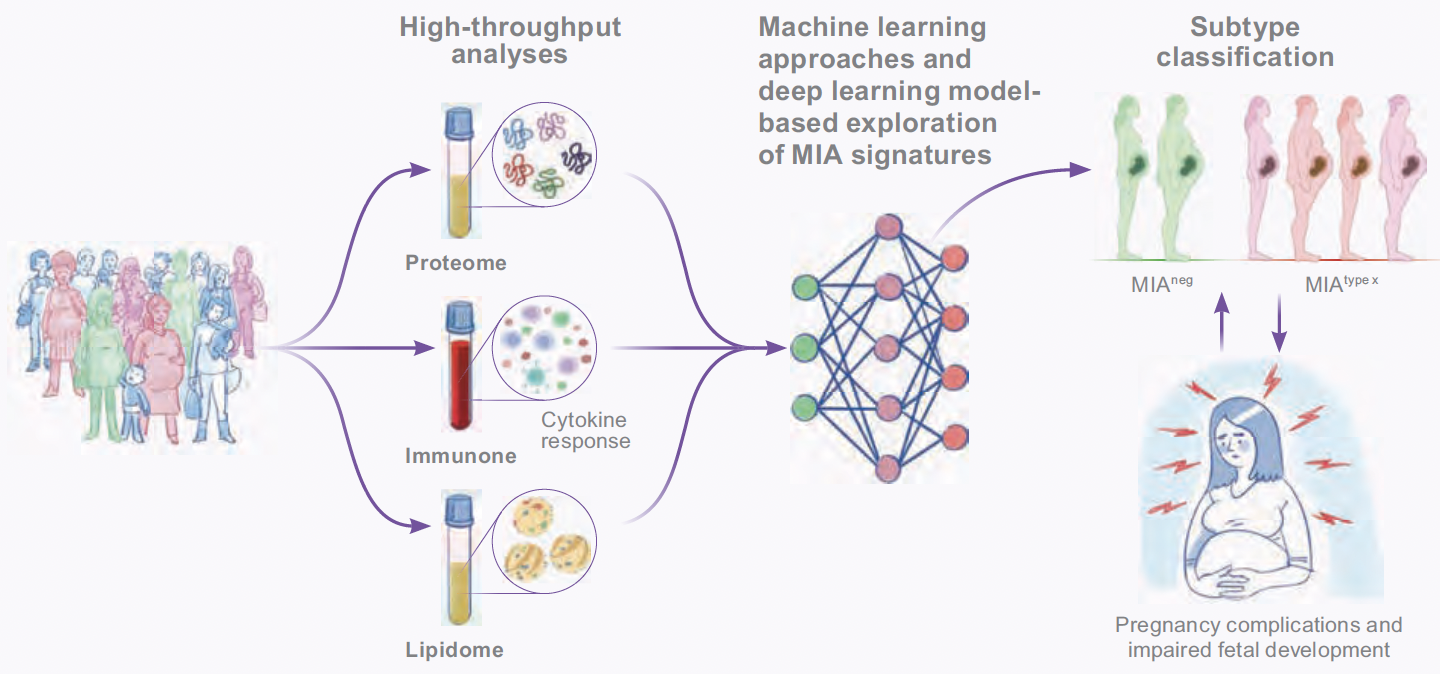CRC MIA
AI for Understanding Maternal Immune Activation


The CRC 1713 (initial funding period: 2025 - 2029) is focused on elucidating the disparity between the intricately calibrated maternal immune adaptation that has evolved to facilitate tolerance to foreign foetal antigens during normally progressing pregnancies - and the maternal immune activation (MIA) instigated by environmental challenges that pregnant women face today. We propose that this dichotomy contributes to the emergence of MIA, which poses a severe threat to maternal and foetal health by acting as a key driver of pregnancy complications.
Despite its purported significance, the immunophenotypic characterisation of MIA has yet to be thoroughly elucidated. This lack of knowledge significantly hampers the detection and monitoring of MIA during pregnancy and, hence, pregnancies at risk. Therefore, there is a high urgency to thoroughly analyse a broad spectrum of markers with a strong potential to contribute to a MIA immunophenotype. Several studies featured the cytokine IL-6 as a proxy or indicator for MIA. This focus on a singular marker may oversimplify the molecular landscape of MIA, as it is reasonable to postulate that MIA is not solely restricted to elevated levels of IL-6. In the present project, we aim to analyse an array of maternal immune markers to define the immunophenotype(s) of MIA during pregnancy induced by today’s environment and lifestyle. We decided to focus on maternal overweight and obesity as a use case for adversities faced by our society, as it is clearly defined and a stable condition over an extended period. This project takes advantage of consistently collected biological samples and metadata at high granularity, available from the longitudinally designed pregnancy study PRINCE. Advanced proteome, immune and lipidome datasets will be generated using the available biosamples, followed by state-of-the-art integrated pattern mining and machine learning methods to define MIA immunophenotype(s) in pregnant women with overweight and obesity. Our insights will also allow to assess the contribution of MIA to the risk of pregnancy complications.
The next step will then be to comparatively dissect MIA immunophenotypes triggered by other adversities, such as nutritional factors and maternal infections. These conditions will also allow us to define the tipping point for the onset of MIA. In the long term, we will translate our findings into the development of MIA monitoring tools to identify pregnancies at risk for complications.
 The CRC 1713 is a large-scale, interdisciplinary, and highly collaborative project coordinated by the UKE Hamburg and Hamburg University. This sub-project is a collaboration with Petra Arck’s Lab (also leading the CRC) und Jörg Heeren.
The CRC 1713 is a large-scale, interdisciplinary, and highly collaborative project coordinated by the UKE Hamburg and Hamburg University. This sub-project is a collaboration with Petra Arck’s Lab (also leading the CRC) und Jörg Heeren.